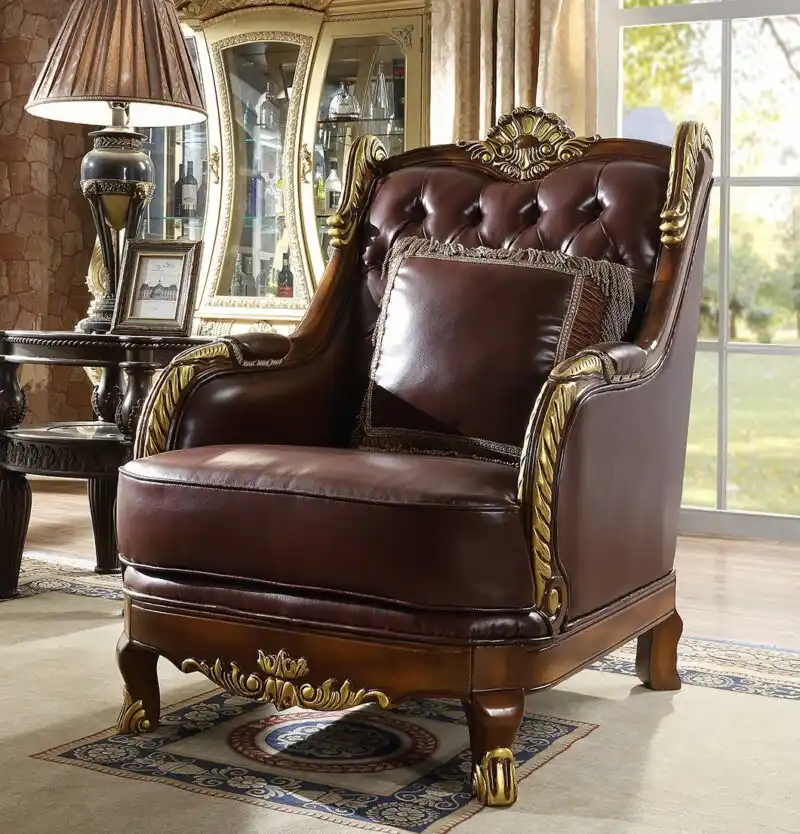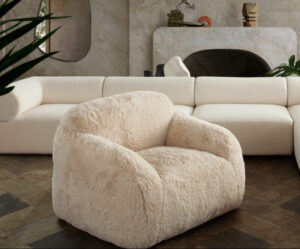Expanded Guide to Choosing Living Room Chairs

Choosing the right living room chairs can greatly impact the comfort, functionality, and style of your space. With the wide variety of designs, materials, and sizes available, making the right choice involves more than just picking a chair that looks good. Here’s a detailed guide to help you navigate the selection process.
Key Takeaways:
- Select chairs that fit the proportions of your room and existing furniture.
- Match the style and materials of the chair to your living room's decor and your personal needs.
- Factor in comfort, including ergonomic features and durable fabric.
- Plan the arrangement to enhance both functionality and aesthetics.
Importance of Choosing the Right Chair
A living room chair isn’t just a seat; it’s an integral part of your room’s decor and functionality. Whether it's an accent chair or a cozy recliner, your selection should align with your room's style, your lifestyle needs, and the room's layout.
Factors to Consider
Room Dimensions and Layout
Measure the Space
It’s essential to measure your room and allocate sufficient space for your chair. Leave at least 18 inches of clearance around chairs for ease of movement.
| Chair Type | Best for Room Size |
|---|---|
| Armchairs | Medium to large rooms |
| Accent Chairs | Small to medium spaces |
| Recliners | Spacious rooms |
Arrangement Tips
Place chairs in ways that encourage conversation, such as facing sofas or around a central coffee table.
Style and Compatibility
[caption id="attachment_752" align="aligncenter" width="402"]

Matching the Decor
Choose a chair style that complements your living room. For example:
- Traditional rooms may pair well with wooden-framed armchairs.
- Modern designs often suit metallic or minimalist chairs.
Making a Statement
Accent chairs with bold patterns or unique shapes can act as focal points. However, avoid oversized or undersized options to maintain proportionality.
Material and Durability
Fabric Choices
- Leather: Durable and easy to clean, but requires regular maintenance.
- Cotton: Comfortable but less stain-resistant.
- Velvet: Luxurious but delicate and needs extra care.
| Material | Advantages | Disadvantages |
|---|---|---|
| Leather | Long-lasting, stylish | Requires conditioning |
| Cotton | Breathable, soft | Can stain easily |
| Velvet | Plush and elegant | High-maintenance |
Frame Materials
Durable frames made from hardwood or reinforced metal ensure the chair lasts longer.
Comfort and Functionality
Ergonomic Features
If the chair is for daily use, prioritize lumbar support and a design that promotes proper posture.
Additional Features
Recliners and swivel chairs add extra functionality, making them ideal for lounging or multi-use spaces.
Types of Living Room Chairs
Armchairs
These versatile chairs provide both comfort and style, fitting well into most living rooms.
Accent Chairs
Smaller and more decorative, these are often used to enhance visual appeal while providing additional seating.
Recliners
Designed for relaxation, recliners are best suited for larger rooms where comfort is a priority.
| Chair Type | Key Features | Best Use |
|---|---|---|
| Armchairs | Comfortable, adaptable | Everyday seating |
| Accent Chairs | Decorative, compact | Occasional seating, statement |
| Recliners | Adjustable, relaxing | Lounging, watching TV |
Practical Tips for Selecting Living Room Chairs
- Lifestyle Considerations: If you have children or pets, opt for stain-resistant fabrics like treated leather or microfiber.
- Balance Materials: Mixing materials like wood, fabric, and metal can create a dynamic and visually appealing space.
- Durability Matters: Always check the construction of the frame and fabric for long-term use.
Arranging Your Chairs
Strategic placement of chairs enhances both usability and design. For instance, arrange them in conversational groupings, leaving adequate space around for movement.
Expanded Guide to Choosing Living Room Chairs
Adding in-depth insights to the previously outlined sections to provide a richer and more comprehensive understanding of how to select the best living room chairs for your home.
Understanding Chair Types: A Closer Look
Living room chairs are available in an array of styles that cater to both aesthetic preferences and functional needs. Beyond the common choices of armchairs, accent chairs, and recliners, specialized options include:
- Club Chairs: Upholstered and often large, club chairs provide a cozy seating experience. Their deep seats make them ideal for lounging or creating an inviting corner for reading.
- Barrel Chairs: Named for their rounded backs resembling a barrel, these chairs add a stylish flair while providing ergonomic comfort.
- Papasan Chairs: These circular chairs, often with a cushioned seat, offer a relaxed and unique vibe, perfect for informal or bohemian-style rooms.
Each type has its niche use. For example, accent chairs shine as decorative pieces, while recliners are synonymous with comfort and functionality. Evaluate the specific role the chair will play in your living room before making a choice.
Choosing Chair Heights for Functionality
Chair height significantly influences both the chair’s comfort and its overall integration into the room. Low-profile chairs, often under 35 inches in total height, are best suited for casual, modern spaces or for rooms where maintaining a clear line of sight to other furniture is essential.
On the other hand, high-backed chairs, which can exceed 45 inches, are designed for formal settings or for providing superior back support. High-back chairs also anchor spaces, making them suitable for positioning near walls or as standalone pieces.
For balance:
- Match the chair’s height with the height of nearby furniture like coffee tables or sofas.
- Ensure the seat height allows the sitter’s feet to rest comfortably on the floor, typically around 16 to 18 inches for average adults.
The Role of Color in Your Chair Choice
The color of your living room chair isn’t just about aesthetics—it plays a role in defining the room’s mood. Neutral tones like beige, gray, or cream are timeless and adapt easily to changing trends or redecorations. These colors work well in minimalist or Scandinavian-style interiors.
In contrast, bold colors like royal blue, emerald green, or mustard yellow can transform the chair into a centerpiece. Use bright hues sparingly in otherwise muted settings to achieve a striking contrast. For rooms with multiple patterns or textures, opt for monochromatic tones in your chair to avoid overwhelming the visual palette.
When choosing a color, consider practicalities as well:
- Darker shades hide stains and wear better, making them ideal for high-traffic or family spaces.
- Light colors exude sophistication but may require more maintenance, especially in homes with children or pets.
Incorporating Patterns and Textures
Patterns and textures can infuse a room with character, adding depth and visual interest. Chairs with striped, floral, or geometric patterns are great for spaces that feel too plain or need a lively touch. Pair these designs with solid-colored furniture to strike a balance.
Textures, on the other hand, enhance the tactile appeal of the room. Materials like:
- Velvet: Soft, plush, and luxurious, perfect for creating a cozy or sophisticated ambiance.
- Bouclé: Chunky and textured, ideal for modern and contemporary spaces.
- Woven fabrics: Add a rustic or farmhouse charm.
When using patterns, align them with the room's scale. Larger patterns make bold statements in spacious areas, while small, intricate designs are best for compact spaces.
Considering Maintenance and Care
Different materials require varying levels of upkeep. If your living room is heavily used, opt for easy-to-clean fabrics like microfiber or leather. These materials are resistant to spills and stains and require only occasional maintenance.
For more delicate options like velvet or silk:
- Vacuum regularly to prevent dust buildup.
- Keep them away from direct sunlight to prevent fading.
Practical tips for maintenance include:
- Applying protective sprays for stain resistance.
- Rotating cushions and seats periodically to avoid uneven wear.
- Choosing slipcovers that can be easily removed and washed, especially in homes with young children or pets.
Budgeting for Your Chair Purchase
Setting a clear budget helps narrow down choices without sacrificing quality. Consider allocating funds based on the durability and functionality you require. Chairs made with high-end materials like solid hardwood frames and premium fabrics may cost more but often outlast cheaper alternatives.
When budgeting:
- Reserve extra for additional features like recliners or swivel mechanisms.
- Look for warranties or certifications that guarantee the chair’s durability.
- Consider waiting for seasonal sales or exploring second-hand options for premium brands.
Chairs for Multifunctional Spaces
In multi-use spaces, choose chairs that adapt seamlessly to various activities. Examples include:
- Foldable Chairs: Convenient for occasional seating and easy to store.
- Chairs with Storage: Ideal for compact rooms, offering hidden compartments for storing blankets or remotes.
- Swivel Chairs: Versatile for living rooms that double as workspaces, allowing easy movement between tasks.
Selecting multi-functional chairs ensures your space remains flexible while retaining a cohesive design.
Assessing Armrest Designs
Armrests may seem like a minor detail but significantly affect both comfort and style. Wide, padded armrests are ideal for lounging, providing a surface to rest your arms or even small items like books. Narrow or absent armrests suit minimalistic designs, offering an open and airy look.
Consider the following armrest types:
- Flat armrests: Great for informal spaces and can double as a temporary surface.
- Curved armrests: Provide ergonomic support and align with classic or traditional decor.
When evaluating armrests, test their height relative to your seating position to ensure they provide adequate support without feeling restrictive.
Eco-Friendly Chair Options
As environmental concerns grow, many buyers are seeking sustainable furniture. Eco-friendly living room chairs use renewable resources, recycled materials, or manufacturing processes that minimize environmental impact. Popular choices include:
- Bamboo Frames: Lightweight, durable, and renewable.
- Recycled Metal or Plastic: Reduces waste while offering a modern aesthetic.
- Natural Fabrics: Organic cotton or hemp are biodegradable and chemical-free.
To ensure your purchase is genuinely sustainable, look for certifications like FSC (Forest Stewardship Council) for wood or GOTS (Global Organic Textile Standard) for fabrics.
Trends in Living Room Chairs
Staying up-to-date with current trends can inspire fresh design ideas. Some of the latest trends in living room chairs include:
- Mid-century Modern: Chairs with sleek lines, wooden legs, and a minimalist profile.
- Earth Tones: Colors like terracotta, sage green, and warm beige dominate contemporary designs.
- Mixed Materials: Combining wood, metal, and fabric for a layered look.
- Oversized Lounge Chairs: Prioritizing comfort with generously proportioned seats.
While trends can be exciting, ensure the chair you choose complements your room's long-term style.
Conclusion
Choosing the right living room chairs involves balancing aesthetics, comfort, and practicality. By focusing on proportions, material choices, and your specific needs, you can select chairs that enhance both the functionality and beauty of your living room.